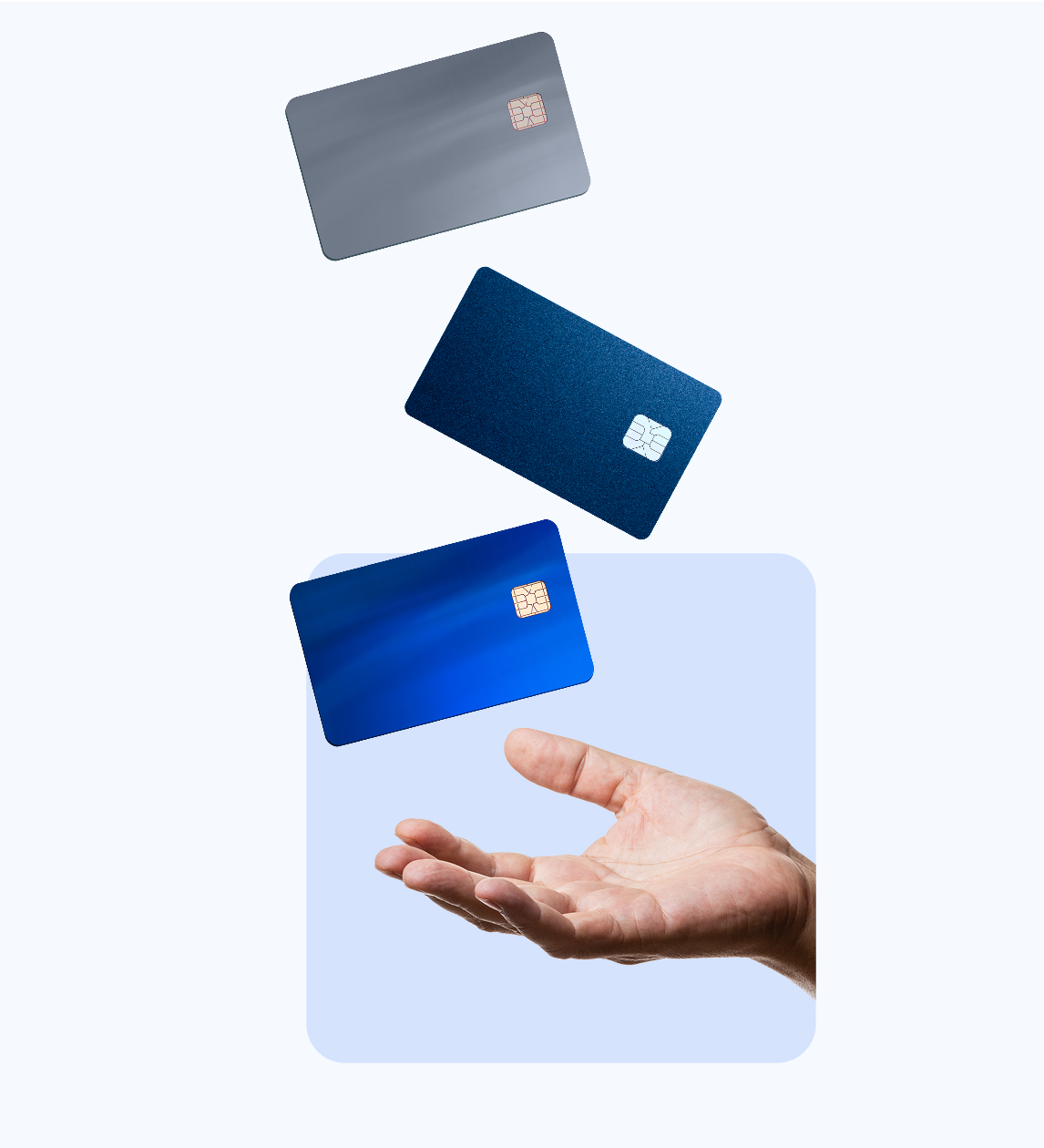Advertiser Disclosure
Bankrate.com is an independent, advertising-supported publisher and comparison service. Our websites may earn compensation when a customer clicks on a link, when an application is approved, or when an account is opened. Therefore, this compensation may impact what products appear and how, where, and in what order they appear within listing categories, except where prohibited by law for our mortgage, home equity and other home lending products. Other factors, such as our proprietary website rules and whether a product is offered in your area or at your self-selected credit score range, can also impact how and where products appear on this site. While we strive to provide a wide range of offers, Bankrate does not include information about every financial or credit product or service.
Best cash back credit cards for December 2025
- • Certified Credit Counselor
- • Credit cards
- • Rewards credit cards
- • Certified Financial Education Instructor℠ (CFEI)
- • Rewards credit cards
- • Travel credit cards
- • Certified Financial Education Instructor℠ (CFEI)
- • Rewards credit cards
- • Travel credit cards
Get personal card recommendations
Answer 4 simple questions and get matched with cash back credit cards from Bankrate's marketplace.
What's your top spending category?

Filter by
Remove a card to add another to compare
Remove a card to add another to compare
Compare Bankrate's top cash back credit cards
Why we ask for feedback
Your feedback helps us improve our content and services. It takes less than a minute to complete.
Your responses are anonymous and will only be used for improving our website.
What's a cash back credit card?
A cash back card is a credit card that earns cash back rewards on purchases. Cash back works by accumulating in your credit card account until you redeem it. Usually, you can redeem your cash back rewards in the following ways:
- Statement credit
- Direct deposit
- Gift cards
- Amazon checkout
- Charity donations and more
However, you'll typically get the most point value from redeeming for statement credits and direct deposits, while the other options usually offer a lower point value. For example, you can redeem 1:1 for a statement credit, but a gift card might only be worth 0.5 cents per point.
How much can you earn with a cash back card?
How much cash back you can earn on a cash back card depends on which card (or cards) you hold. If you have a card that earns 1 percent back on everything, you can expect 1 cent back for every dollar you spend. Similarly, a card with a 5 percent cash back rate will reward 5 cents for every dollar you spend.
In short: the more you spend, the more you can earn. But be wary of seeing rewards as a reason to spend money. Cash back and rewards become a slippery slope when you start imagining that 5 percent cash back is the same as a 5 percent discount on your purchase.
Here's the cash back earning potential for the most common cash back rates with a spending example of $5,000 in a year:
| Card type | Rewards rate | Cash back earned |
| Base | 1% | $50 |
| Flat rate | 2% | $100 |
| Bonus category | 3% | $150 |
| 4% | $200 | |
| 5% | $250 |
How many cash back cards do you need?
A Bankrate survey shows most people prefer cash back to other rewards options. These cards can be nice to have because you can earn a small chunk of your spending back without worrying about point values, transfer partners or airline miles.
Multiple rewards cards could offer more value, but might be a little complex for some: you often need to juggle rotating rewards categories or transfer points among multiple cards to maximize the value. If you want as few cards as possible, you should choose a flat-rate credit card that rewards 2 percent back or more on all purchases.
While a 2 percent card might be less hassle, you have the potential to earn quite a bit more if you can maximize a few different tiered cash back rewards cards.
Best cash back card features
Choosing a great cash back card typically comes down to how you want to earn rewards, but there are some features you should also always consider. For instance, high rewards rewards rates are nice, but they don't mean much if they're in categories you don’t spend money on. Choose a card with features that are valuable based on your current spending habits. Here are some of the top features to consider when making your decision:
Welcome offer
Cards usually have a welcome offer — also called a sign-up bonus — that gives you a windfall of cash back for reaching a spending threshold in the first few months of opening the card. These bonuses can prove especially valuable if you can easily meet the spending requirement.
Best card: Capital One Savor Cash Rewards Credit Card
Intro APR offers
The best cash back cards also come with an intro APR period for balance transfers, purchases or both. Intro APR periods for purchases on cash back cards can be handy for earning rewards on a large purchase while also giving you time to pay off your balance.
Best cards: Citi Double Cash® Card or Chase Freedom Unlimited®
Low or no annual fee
Why let more fees eat into your cash back? If you can offset a cash back card's annual fee, it might be worth it. But it can be better to choose a card with no annual fee so you don't have to worry about it denting your rewards.
Best card: Blue Cash Everyday® Card from American Express
High rewards rates
Pay close attention to a card's rewards rates to ensure you're getting maximum value out of using it. If you want top cash back earnings, then look for cards with at least 3 percent to 5 percent cash back and higher.
Best card: Blue Cash Preferred® Card from American Express
Our expert advice: How to maximize cash back credit cards
Our credit card experts are very familiar with the top cash back cards, and many of Bankrate’s writers and editors have strategies of their own to maximize credit card rewards. Although what works for our experts may not necessarily be a great fit for you, here are a few different, well-crafted cash back strategies to learn from:
While premium travel cards come with perks and credits, they usually charge hundreds in annual fees. But using a no-annual-fee cash back card is an underrated way to offset your travel costs. For example, Bankrate senior editor, Brooklyn Lowery, uses a Bank of America cash back card to get cash back that she redeems for travel.
Lowery uses the Bank of America Customized Cash Rewards credit card — plus, she's a Preferred Rewards member with Bank of America, so her cash rewards rate is even higher than the card’s standard rate.
I usually let that cash back accumulate and then redeem it after a trip to offset expenses — food, an experience or a rental car — that my travel rewards didn’t cover. I love the feeling when that $200 or $300 hits my checking account and I know I didn’t do anything special to earn it. So you could say that the Bank of America Customized Cash Rewards card does have a place in my travel rewards strategy, even if not directly.Brooklyn Lowery, Senior Editor, Credit Cards
You can also use a cash back card that has a bonus travel category or even a gas category to earn cash back during road trips. Then use Lowery's strategy to offset your trip's costs with statement credits or direct deposit into your bank account.
If you’re a perfectionist and want to earn boosted cash back in most of your spending categories, you’ll need multiple credit cards. For some people it’s worth it, but for others it's not. You might be tempted to open several cards at once and put yourself on an optimized cash back road to riches, but this kind of impulse might be overwhelming. Sometimes the best strategy is the one you can rely on without much thought.
Former Bankrate senior editor, Nouri Zarrugh, has a great strategy for maximizing cash back without overthinking it:
When I first got into rewards strategies, I went a little overboard, carrying a card for every spending category I could think of, constantly switching based on where I was shopping or which bonus category was available in a given quarter. It eventually became a headache, though. Now I take a more streamlined approach, focusing on a few key spending categories as I try to strike a balance between high earnings and low maintenance. Is my stack perfect? Definitely not. But for now, five cards is plenty to juggle.Nouri Zarrugh, Former Senior Editor, Credit Cards
While this is just Zarrugh's experience maximizing cash back with his spending, you may get some inspiration from exactly how he's set up his wallet to earn rewards. Here's how his credit card stack breaks down for him to maximize his cash back:
-
Groceries: The Citi Custom Cash® Card automatically rewards your top spending category each billing cycle, and I only use it for groceries, making that my top category by default.
-
Gas and online shopping: It makes sense for me to use the no-annual-fee Blue Cash Everyday® Card from American Express to get a solid rewards rate on gas. As an added bonus, this card comes with an online shopping category — another key category for me.
-
Dining: The Capital One Savor Cash Rewards Credit Card offers one of the best rates you can get at restaurants without paying an annual fee (See Rates & Fees)
-
Everything else: I use the Citi Double Cash® Card for all other purchases.
Sometimes the best strategy is one you hardly think about. Most cardholders don't have the time or spending habits to track rotating categories or plan purchases the way that some people do, so a set-it and forget-it approach to cash back and rewards is their best way to maximize cash back. We spoke with India Davis, former editor on the Bankrate editorial team, about how she makes cash back work for her.
Here's what she shared:
While I'm a credit card expert, I prefer a straightforward cash back strategy. I only alternate between the Amex Blue Cash Everyday for gas and online shopping, and the Capital One Quicksilver for everything else. Often, my purchases change from week to week. Sometimes, it's groceries and hobbies. Other times, it's pet expenses and gifts. Every now and then it's a concert or experience. Call it vibes, call it flexibility, but more than anything, I want my cards to be flexible and available with an opportunity to see a nice chunk of cash back in my account.India Davis, Former Bankrate editor
Watch out: Mistakes to avoid with cash back cards
Earning cash back seems simple, but a few mistakes can leave you missing out on potential cash back. Keep these common mistakes in mind:
If your card’s spending limit for earning boosted rewards is $500, any dollar you spend past that limit will only earn the card’s base rewards rate.
Some cards with annual fees have easily accessible perks that offset the costs of the annual fee.
If you spend reliably in one or two everyday categories, a tiered rewards card might be a better fit for you.
What would you do with $200 of cash back in your credit card account right now?

If I had high-interest debt, I’d apply it directly to the balance—that’s a guaranteed return. If I didn’t, I’d put it toward something that supports long-term financial stability, like topping off an emergency fund or contributing to a short-term savings goal. Small amounts of “found” money add up, and when used intentionally, can create momentum and confidence. Financial progress doesn’t always come from big windfalls—it’s often built through consistent, purposeful decisions like this.

If I had high-interest debt, I’d apply it directly to the balance—that’s a guaranteed return. If I didn’t, I’d put it toward something that supports long-term financial stability, like topping off an emergency fund or contributing to a short-term savings goal. Small amounts of “found” money add up, and when used intentionally, can create momentum and confidence. Financial progress doesn’t always come from big windfalls—it’s often built through consistent, purposeful decisions like this.

It really depends on your personal financial goals. But here are a few smart ways to think about cash rewards of any size:
Pay down debt faster, especially if you’re carrying a balance.
Build an emergency fund (3 to 6 months' worth of fixed expenses).
Invest it to build long-term wealth. Even small amounts add up over time.
Or, absent of any debt, use it guilt-free for something meaningful or fun like a night out, a short trip or a splurge you've been putting off.

It really depends on your personal financial goals. But here are a few smart ways to think about cash rewards of any size:
Pay down debt faster, especially if you’re carrying a balance.
Build an emergency fund (3 to 6 months' worth of fixed expenses).
Invest it to build long-term wealth. Even small amounts add up over time.
Or, absent of any debt, use it guilt-free for something meaningful or fun like a night out, a short trip or a splurge you've been putting off.
Frequently asked questions about cash back credit cards
-
Every cash back card is different and the highest-paying one will depend on what you buy and where you spend the most.
For example, suppose you want to buy a new couch from your nearest furniture store and it costs $1,000. The Wells Fargo Active Cash card earns a flat rate of 2 percent cash rewards for a total of $20. However, if you use the U.S. Bank Cash+ Visa Signature card for that same purchase, you can earn $50 back because it earns 5 percent back at furniture stores (when you enroll, up to $2,000 in spending per quarter).
-
The right credit card for you will depend on your spending habits and the perks that matter most to you. Travel cards are great for people who know they want to redeem rewards for travel expenses or want perks like elite status, free checked bags, free hotel stays or airport lounge access.
Cash back cards can be simpler to use and offer more flexibility than travel cards. If you don’t travel often enough to justify an annual fee on a travel card, a cash back card may be better for travel.Learn more: Cash back vs. travel rewards -
You may not receive cold, hard cash, but issuers offer redemption options like a direct deposit into a checking account, mailed checks, statement credits or gift cards.
Perhaps the closest you can get to redeeming rewards for physical cash is through a Wells Fargo card that allows you to redeem for cash withdrawals at eligible ATMs.
-
Generally, cash back earned with a credit card is not considered taxable income. Learn more about what credit card rewards can be considered taxable.
-
Many cash back cards offer rewards that never expire as long as your account remains open and in good standing. However, it’s best to check the terms and conditions before applying since not every issuer has this policy.
Up next
How we choose the best cash back credit cards
We select cards for “Best” credit cards pages based primarily on how cards score in our proprietary card rating system, our editors’ subjective assessment of card quality, card approval odds and credit requirements and unique card features.
Cards typically must score a minimum of 3.0 to be included on a “Best” list. However, we may include cards with scores below 3.0 if they have low credit requirements or unique features — despite their scores, these cards may still be among the “best” in certain categories. Card ratings are not influenced by advertisers or issuer relationships in any way.
Card selection and ordering may vary based on business considerations, including Bankrate visitor interest, site interactions and card application volume. Affiliate commissions (see how we make money), limited-time offers and a card’s general popularity in the product landscape may also influence which cards we feature on our pages and the order in which they appear. Bankrate’s editorial and business teams also strive to feature a variety of card types from various issuers.
Here’s a quick breakdown of the key factors in our cash back card scoring methodology and details we considered when putting together our list of the best cash back cards.
-
Value 65%
-
Flexibility 15%
-
Perks 15%
-
Customer experience 5%
-
The primary criteria for a rewards-earning card’s rating is its rewards value. This includes the card’s average rewards rate, estimated annual rewards earnings, sign-up bonus value and reward redemption value.
To estimate a card’s average annual rewards earnings, we first calculate its average rewards rate based on how much it earns in different bonus categories and how closely its categories align with the average person’s spending habits. In other words, we assess whether the card earns rewards at a high rate in the most popular spending categories.
We use consumer spending data from the Bureau of Labor Statistics (BLS) to get a reliable third-party measure of people’s spending habits. The most recent BLS data estimates average total spending in 2023 was $77,280 per consumer. We then narrow our focus to which purchases are likely to be put on a credit card and earn rewards, subtracting expenditures like housing, vehicle purchases and education. This gives us a total “chargeable” annual spend of around $22,500.
Some of the major spending categories that contribute towards the annual spend include:
- Groceries: $6,000
- Dining out: $3,900
- Entertainment: $2,500
- Gas: $2,400
- Apparel and services: $2,000
Using this data, we assign a weighting to each of a card’s bonus categories. For example, a card’s grocery rewards rate receives a 26 percent weighting based on how much of the average person’s budget is spent on groceries. We also estimate the redemption value of points or miles from various issuer, airline and hotel rewards programs.
This weighting and rewards valuation allows us to estimate a card’s average annual rewards earnings — how many points or miles you’d earn with a given card if your spending was about average and you used the card for all of your purchases — as well as what those points are worth. We also use point valuations to determine a card’s sign-up bonus value
With these calculations complete, we assign each card a score based on how its average rewards earnings, sign-up bonus value, rewards rate and redemption value stack up against other rewards cards.
The better these values, the higher its score will be, making it more worthy of inclusion in our list and increasing its potential ranking.
Here’s a deeper look at the factors considered as part of a rewards card’s “Value” rating:
5Rating: 5 stars out of 5Overall Score-
Ongoing rewards value 50%
-
Annual fee & average APR 20%
-
Rewards rate 15%
-
Sign-up bonus value 15%
-
We also score cards based on how much it costs to keep them in your wallet or carry a balance.
To start, each card is scored based on whether it offers an intro APR and how its ongoing APR compares to the rates available on other rewards cards. However, the latter rating only has a slight influence on the card’s score and whether the card is included in our list, since rewards card users generally try to avoid carrying a balance.
More important to both a card’s score and its inclusion in our list is how its annual fee influences its overall value. We consider a card’s annual fee in two ways — how it ranks relative to the fees you’ll find on other cards in the category and how it impacts a card’s overall rewards value.
Cards with an annual fee will always be at a slight disadvantage in our scoring system since annual fees inherently cut into your rewards value. However, if a card offers terrific value via its ongoing rewards and perks, it can earn a high score and a spot in our list even if it carries a high annual fee. After all, the highest rewards rates and most valuable perks are often found on cards with annual fees.
With this in mind, we rate a card based primarily on how its ongoing rewards value and ongoing perk value (such as annual credits or bonuses) stack up against those of other cards in the category when you subtract annual fees.
That said, we strive to include as many no-annual-fee options in our list as possible since many people would rather not worry about offsetting fees, even if a card carries impressive rewards and perks.
-
Rewards cards may make it easy to earn a lot of points, miles or cash back, but how easy is it to use those rewards? After all, if it takes a ton of effort to redeem rewards or you can only redeem rewards in a couple of ways, a card may be more trouble than it’s worth.
As such, we rate each card’s flexibility based on the restrictions it imposes on earning and redeeming rewards. We factor this rating into a card’s overall score and consider it when deciding on a card’s inclusion in our list.
Flexibility factors include whether a card only allows you to earn a high rewards rate on only a small amount of spending or requires you to meet a certain earning threshold before you can redeem rewards. We also examine whether your points are worth less when you opt for some redemption options over others and whether a card gives you the flexibility to transfer rewards to travel partners.
-
We also score each card’s set of features – its perks and benefits — against five tiers of features to provide a rating.
We break down these tiers as follows:
- Tier 1 includes fewer features than even standard credit cards (for example, an ultra-streamlined card that offers basic utility and next to nothing in the way of ancillary benefits).
- Tier 2 includes the benefits you’d expect on standard Visa or Mastercard credit cards, such as free access to your credit score, car rental insurance and $0 liability for fraudulent charges.
- Tier 3 includes “prime card” or better-than-average card features like cellphone insurance, lost luggage insurance, concierge services and purchase protection.
- Tier 4 includes luxury features such as airport lounge access, elite status with an airline or hotel and credits for expedited security screening membership programs.
- Tier 5 includes the sort of exemplary benefits you’ll find on top-tier luxury cards, such as high-value travel credits, cardholder memberships and other unique and valuable perks.
In evaluating the best cards, we tend to favor cards that offer at least Tier 3 benefits, unless they include other unique features that could make up for less-impressive perks.
Have more questions for our credit cards editors? Feel free to send us an email, find us on Facebook, or Tweet us @Bankrate.
For Capital One products listed on this page, some of the benefits may be provided by Visa® or Mastercard® and may vary by product. See the respective Guide to Benefits for details, as terms and exclusions apply.





